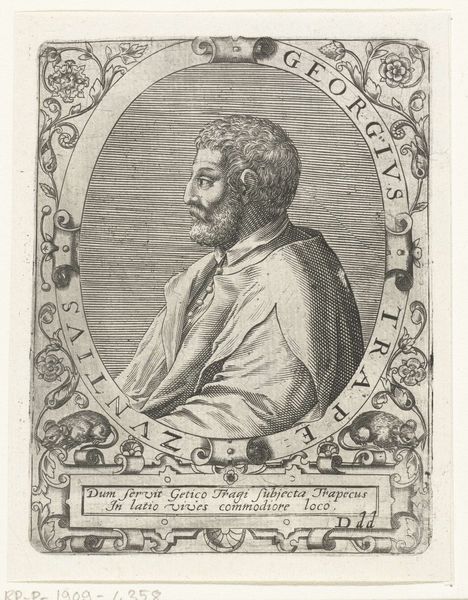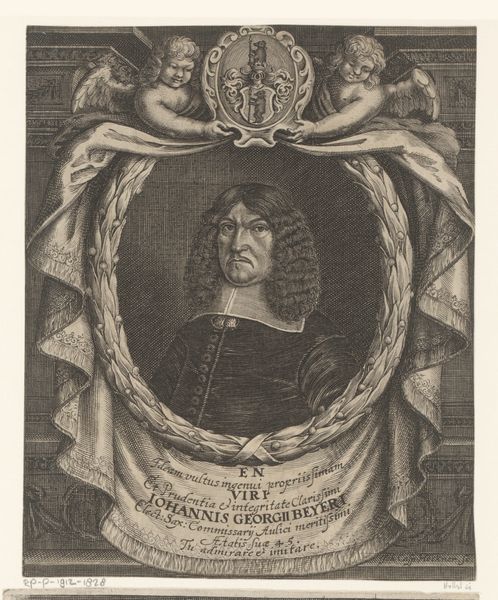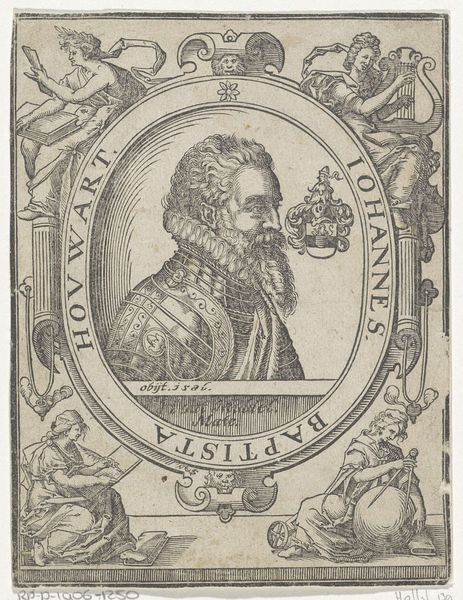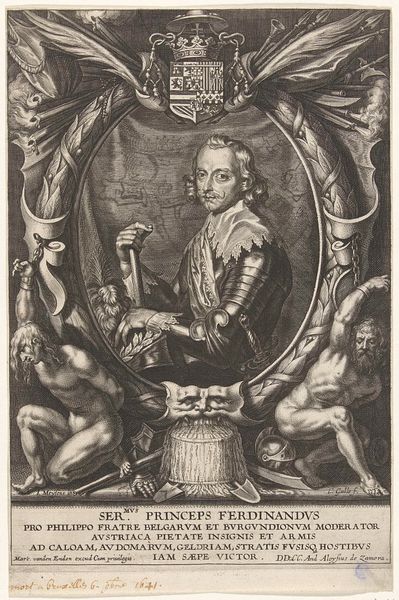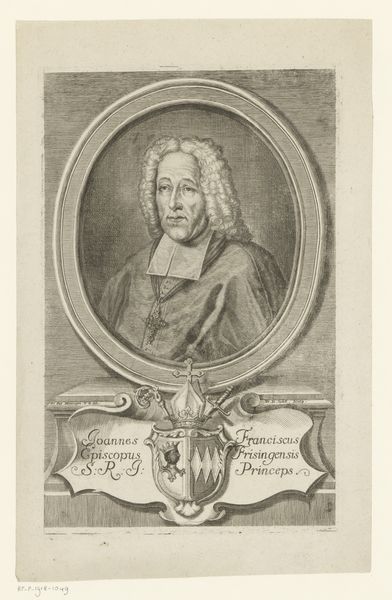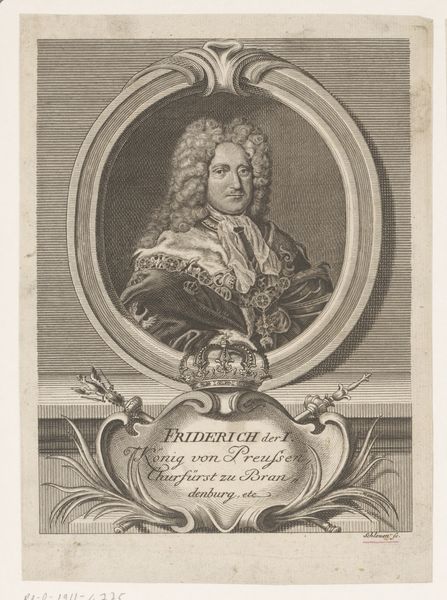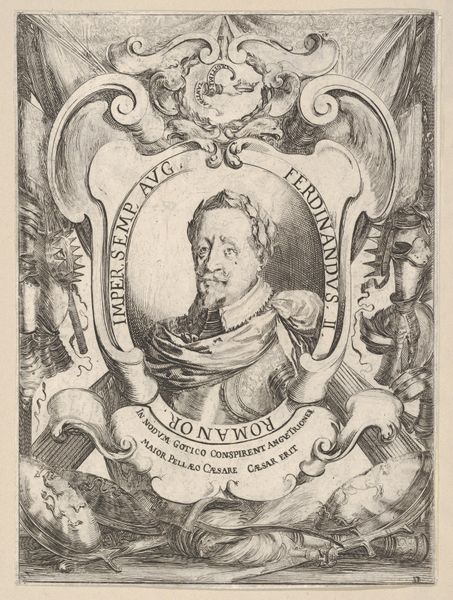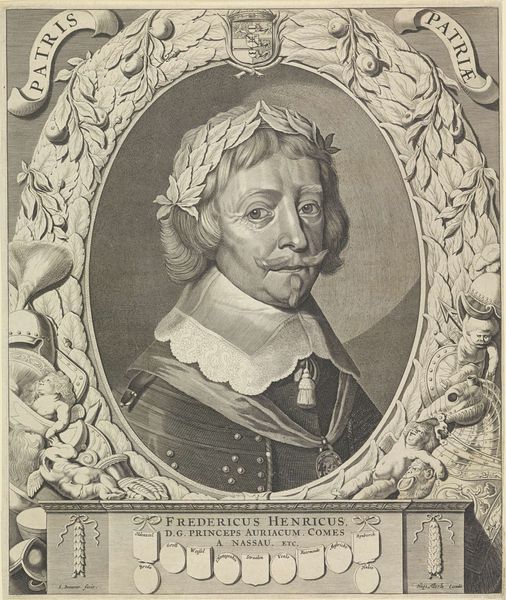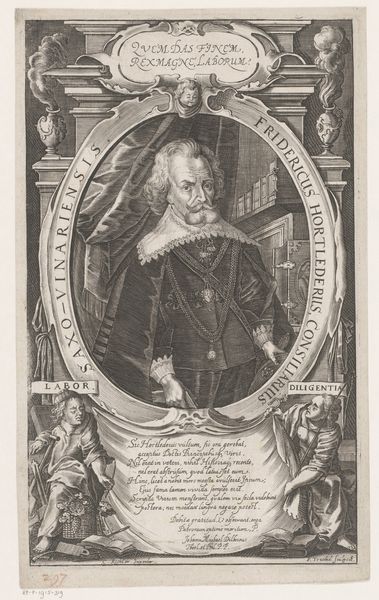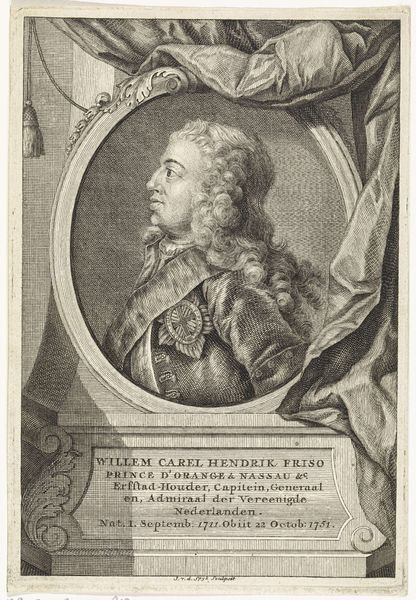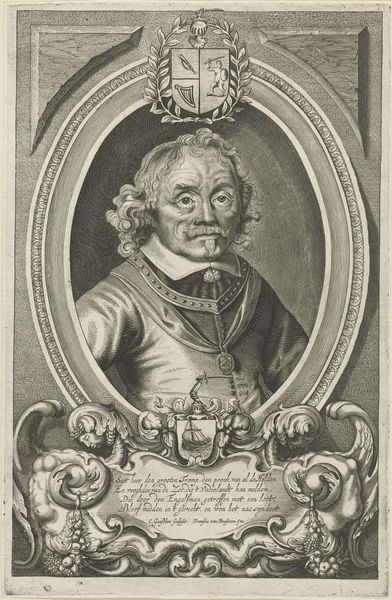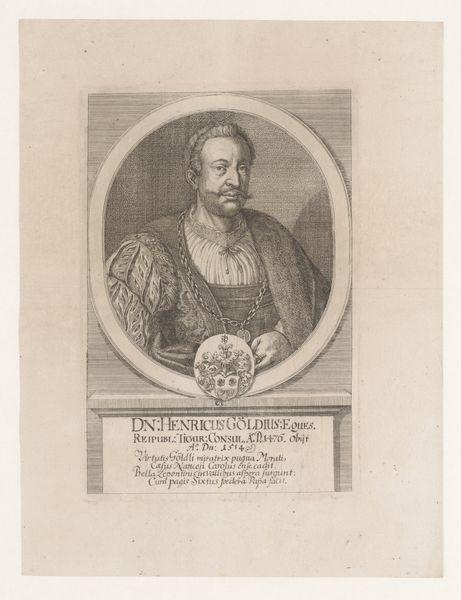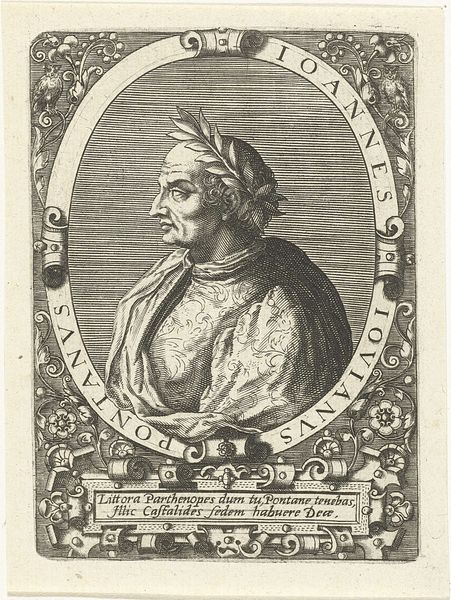
drawing, print, etching, paper
#
portrait
#
drawing
#
baroque
# print
#
etching
#
paper
#
portrait drawing
Dimensions: 242 × 151 mm (image); 245 × 157 mm (plate); 425 × 279 mm (sheet)
Copyright: Public Domain
Curator: What strikes me first is the weightiness of it, despite being a print. Like some heavy marble slab. Editor: Precisely! This is the "Title Page from the Iconography," an etching done in 1645, by Jacques Neeffs, after a design by van Dyck. Curator: Oh, van Dyck. That explains the assured hand, the effortless drama. Though it feels a bit like vanity project, doesn't it? Putting your own bust so prominently. Editor: Well, let’s delve deeper than initial impressions. Observe how the composition uses strong verticals to create stability, reinforcing the monumental quality. The inscription, the garland, the very air crackles with symbolism. Note, too, how the stark black and white emphasizes line and form, lending it an austere gravity appropriate for a catalog of illustrious figures. Curator: Gravity, yes, but also a sort of…showmanship? The bust emerging from the clouds like a phantom celebrity. It feels deliberately theatrical. But I notice the small busts to either side are helmeted...Roman perhaps. Editor: Ah, good eye. The contrast emphasizes not only Van Dyck’s place in the artistic pantheon, placing him, quite literally, atop classical tradition, but the enduring nature of artistic accomplishment itself. Each element serves a purpose: the text celebrating painters and sculptors, the laurel wreath signifying artistic achievement. Curator: Okay, okay, I see. More than mere vanity then. A celebration of artistic legacy. Although, the drama remains. It’s so unapologetically Baroque. But I concede your points about classical aspirations. Editor: The apparent “vanity,” as you call it, becomes, in this light, a proclamation of artistic agency and identity. Think of the Baroque as an assertive claiming of space, an artistic era as well. It makes it understandable how an etching and engraving on paper, a reproductive medium, can become a powerful artistic statement in its own right. Curator: Well, thanks to you, what I initially saw as a bit ostentatious now reveals itself as something much more nuanced. That makes me want to dive deeper to further examine. Editor: Precisely my reaction, but I'm mostly stuck with it because that's all the time we have.
Comments
No comments
Be the first to comment and join the conversation on the ultimate creative platform.
